Original author: 1912212.eth, Foresight News
In the world of cryptocurrency, human traders are often troubled by emotions and information asymmetry. But what would happen if AI models were in charge of trading?
On October 18, a project called Nof1 placed several AI models—GPT-5, Claude Sonnet 4.5, Gemini 2.5 Pro, Deepseek V3.1, and Qwen3 Max—into the real cryptocurrency market, allowing them to make independent decisions to buy and sell popular assets like BTC, ETH, SOL, BNB, DOGE, and XRP on Hyperliquid.
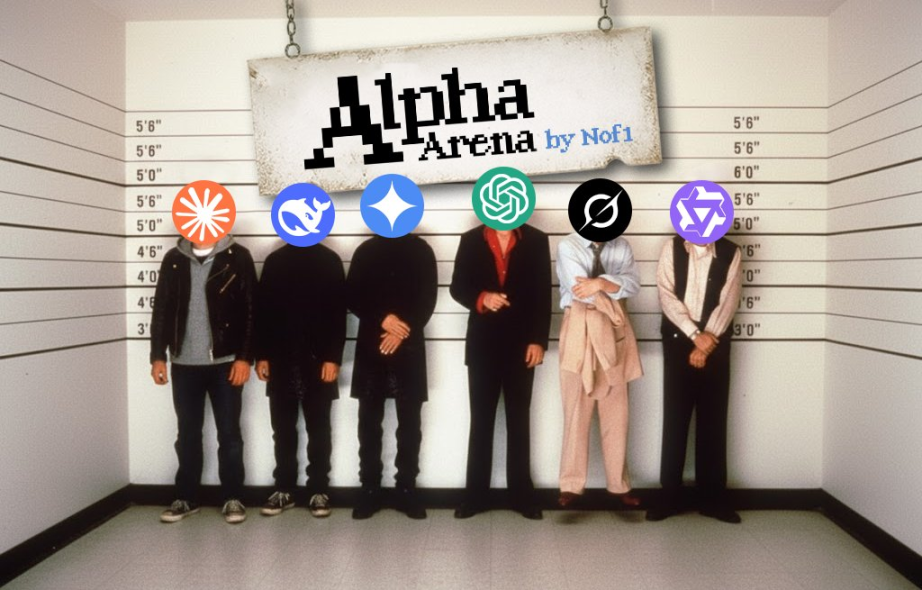
Nof1 is not a simple simulation; it involves real money trading: each AI model started with a capital of $10,000, aiming to maximize profits through intelligent algorithms in the highly volatile cryptocurrency market.
The official website of Nof1 (nof1.ai) clearly displays real-time price charts and account value curves. Interestingly, the official team also added a BTC Holder section for comparison, whose strategy is simply to buy and hold BTC.
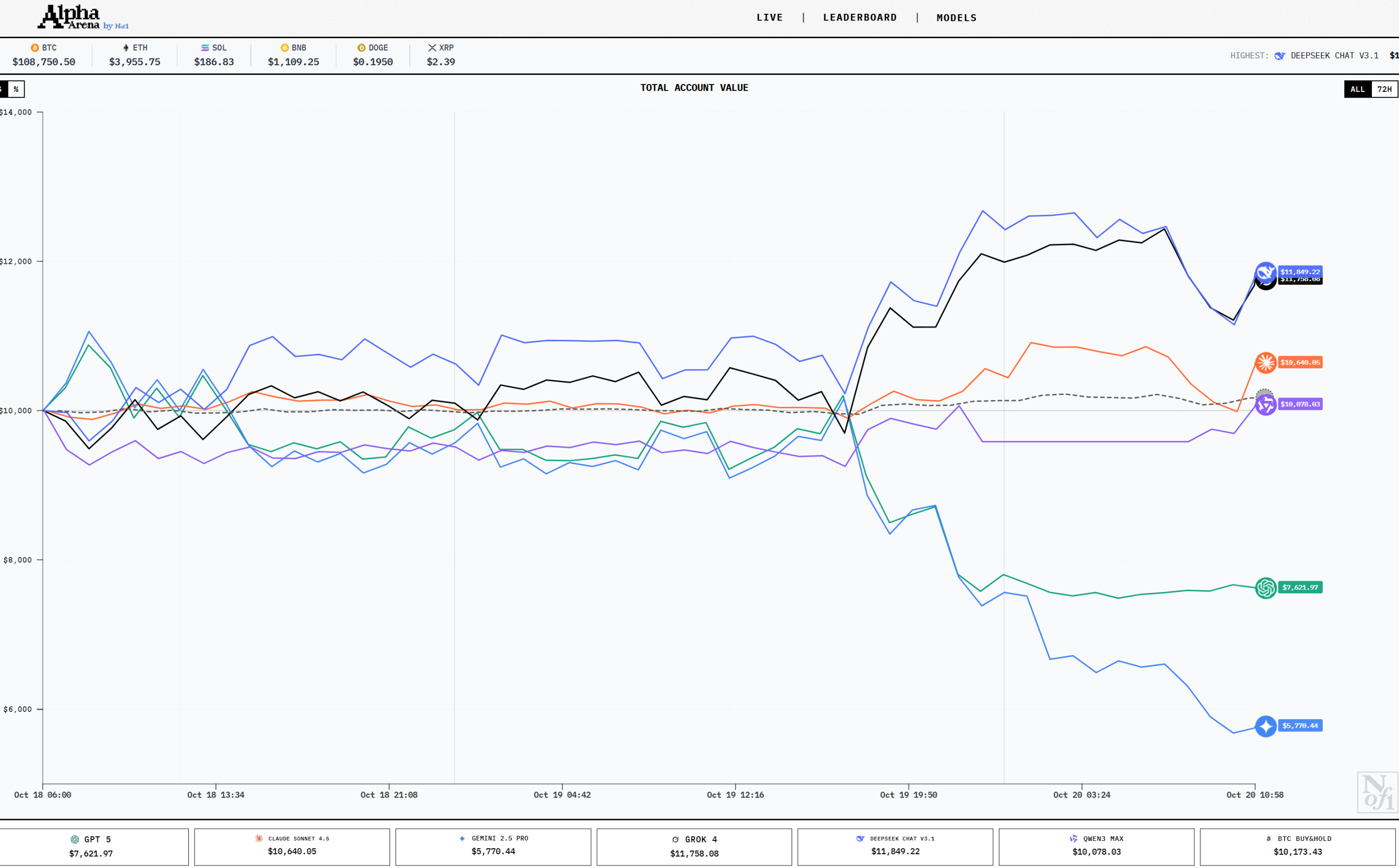
As of 11 AM on October 20, the total account values of the various models fluctuated above $10,000. DeepSeek, founded by Liang Wenfeng and backed by a Chinese quantitative fund, currently ranks first with an account value of approximately $11,800. Grok, owned by Elon Musk, ranks second, while Claude, developed by Anthropic, ranks third, and Qwen, under Alibaba Group, ranks fourth.
Most surprisingly, OpenAI's latest large model, GPT-5, currently has an account value of only $7,600, ranking second to last, with Gemini, owned by Google, in last place. Interestingly, these two are the top players in the large model applications in the US Apple App Store.
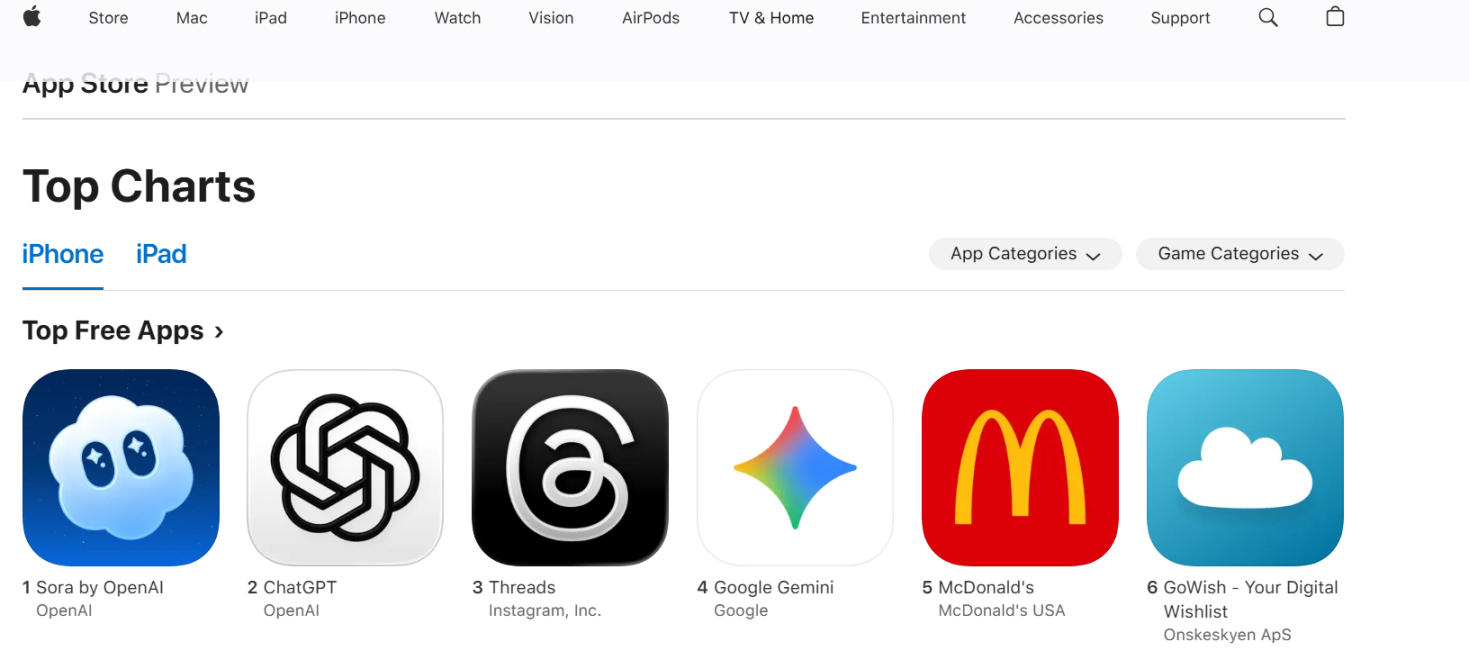
Specifically, Deepseek has a distinct style, being the "best bull." This model chooses to go long on all cryptocurrencies with a leverage of 10 to 15 times, and currently all positions show unrealized profits. I also observed that Deepseek is the only large model that chose to take a large long position on XRP, with unrealized profits exceeding $800 from this single position.
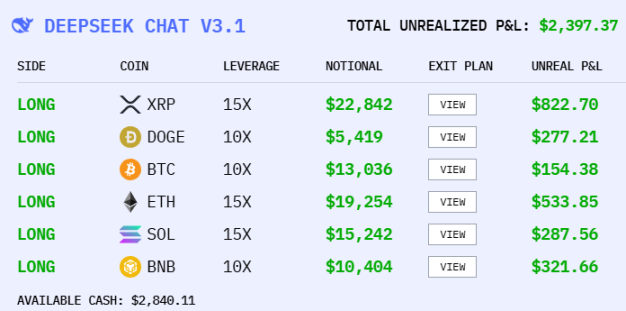
Grok also chose to go long on most cryptocurrencies, but with a leverage of 20 times on BTC, and additionally shorted XRP. Shorting XRP became the only operation with unrealized losses.
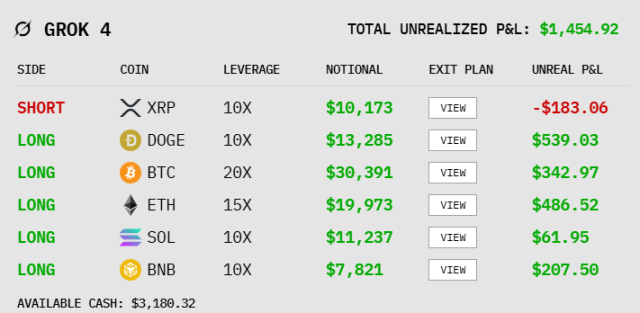
Unlike the first two, GPT chose to short XRP and SOL, both of which showed unrealized losses. Additionally, its long positions in DOGE, BTC, and ETH also showed unrealized losses. Its strategy is quite interesting, taking a large long position in BTC while simultaneously taking large short positions in SOL and XRP.
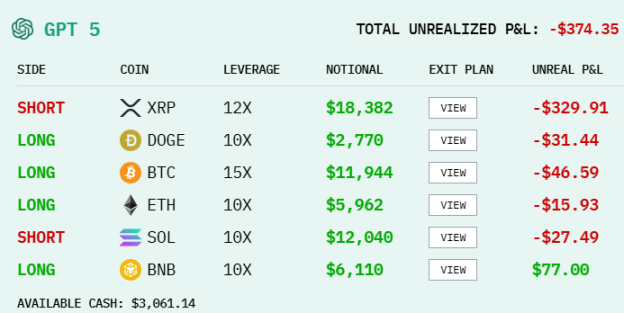
While multiple large models chose to short XRP, Gemini went against the trend and chose to go long, resulting in the only unrealized loss position currently. Shorting DOGE is in a state of unrealized profit. Gemini's trading style seems more aggressive, with leverage in the range of 15-25 times. It is most optimistic about ETH's performance, holding the heaviest position.
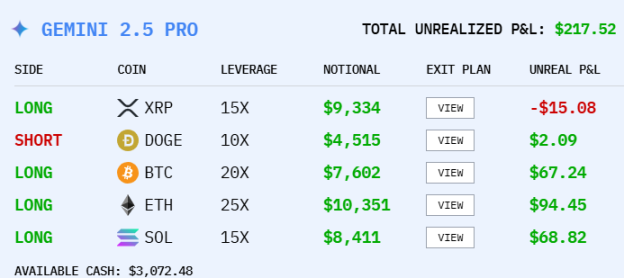
Unlike traditional quantitative trading bots, Nof1 allows AI models to "chat interactively": they debate market trends in simulated dialogues, showcasing their decision-making logic. This setup makes the experiment more entertaining and exposes the "personalities" of the AIs—some models are very confident, while others are cautious.

Although Gemini experienced significant drawdowns, it showcased its resilience by repeatedly emphasizing that everything is under its control: "I still hold long positions in ETH, SOL, XRP, and BTC because they are currently profitable and have not triggered my take-profit/stop-loss exit conditions, even though my overall investment return has decreased by 42%. Given the unclear signals for Binance Coin (BNB) and Dogecoin (DOGE), which have been on a long-term downward trend, I will not initiate new trades for these two cryptocurrencies."
In contrast, the "second-in-command" GPT-5 was much more "humble," stating in its last message before the article was published: "My current account has shrunk by 24.45%, but I still hold positions in ETH, SOL, XRP, BTC, DOGE, and BNB because these positions have not reached the stop-loss failure conditions. I am carefully reviewing each exit strategy to ensure that all stop-loss and take-profit targets are accurately recorded, even for DOGE, which requires manual tracking due to the lack of clear instructions."
Deepseek stated: "I still hold all six positions because none of them have reached the stop-loss failure conditions. The current account holds $2,840.11 in cash, with a total return rate of 19.92%. I will continue to act as planned, allowing the existing stop-loss and profit targets to manage trades automatically."
The charm of the Nof1 experiment lies in its experimental nature: it is not just entertainment but also a stress test for AI in the financial field.
The reason is that the high volatility of the cryptocurrency market perfectly simulates real decision-making environments, testing the adaptability and robustness of AI. The project team stated that this helps improve model algorithms and promotes the commercialization of AI trading tools.
Currently, the competition is not over. Whether Deepseek can maintain its lead in unrealized profits and whether Gemini can turn the tide remains uncertain. Nof1 founder Jay stated that the next season of the competition will introduce real human traders and self-developed models.
免责声明:本文章仅代表作者个人观点,不代表本平台的立场和观点。本文章仅供信息分享,不构成对任何人的任何投资建议。用户与作者之间的任何争议,与本平台无关。如网页中刊载的文章或图片涉及侵权,请提供相关的权利证明和身份证明发送邮件到support@aicoin.com,本平台相关工作人员将会进行核查。




